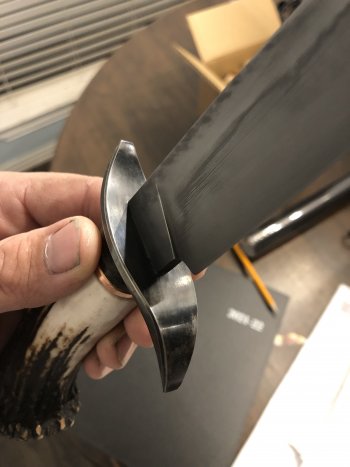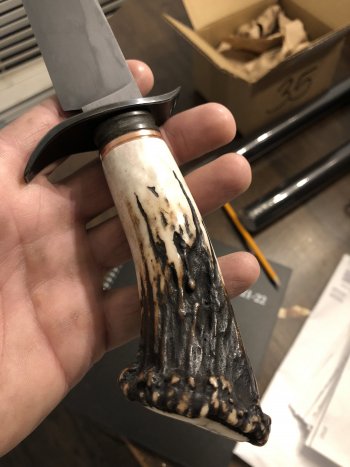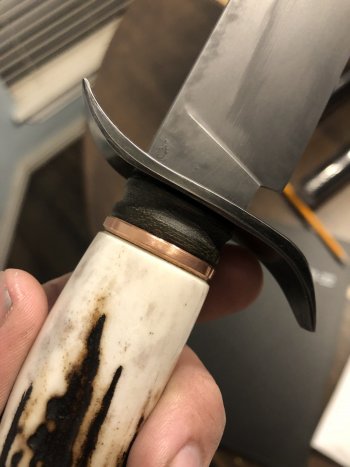believerjoe
Well-Known Member
I have this 12 year old boy that comes every Sunday at church to show me his latest knife purchase. They are usually the 7 dollar flipper type. I decided to make him one as a surprise and have been tinkering with it for a while. Keeping costs down by using 1084, mild steel, and elk antler from Petco! Yes, I check the antler chews from time to time. I ground the brow tine section down and recolored the whole thing. It was white. I just caught heck in another location because I posted that I quenched 1084 in AAA. The knife was ground to about 80% done and when cleaned up had an auto hamon in the thicker section. It was hard when quenched, but I don’t have a tester. Tough to file, throws major sparks, so I went with it and it’s a gift. Some scrap copper and olive drab micarta to finish it off. I want to be a tester so I can try things no know the result and ignore the peanut gallery comments. They may be right, it maybe could be better, but could it be just fine? Going to sharpen it and put it through a few tests, but it’s basically done except for removing some fine scratches from the antler.




